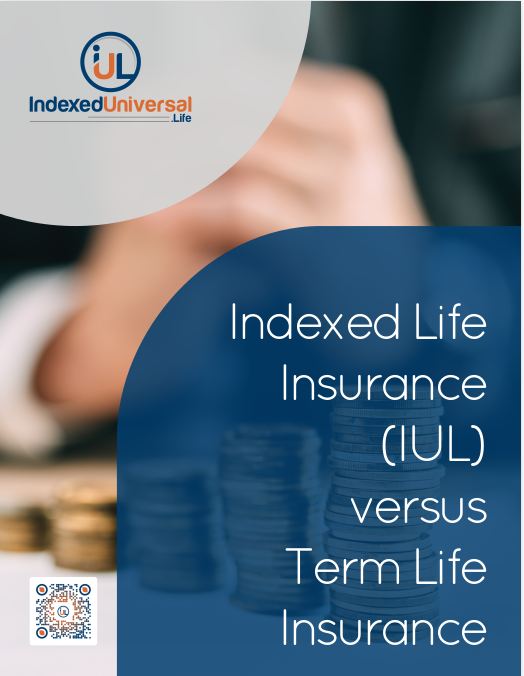
Indexed Universal Life Insurance vs. 401(k): The Ultimate Retirement Showdown
Key Takeaways:
- Indexed Universal Life (IUL) insurance offers potential for early withdrawals, tax-free distributions, and cash value growth, but understanding market volatility, fees, and policy complexities is crucial.
- While a 401(k) provides unmatched long-term investment opportunities, employer matching contributions, and flexibility in contributions, it lacks the liquidity and tax advantages of an IUL, necessitating careful consideration based on individual financial goals and risk tolerance.
When it comes to planning for retirement, the 401(k) has long been the go-to option for many. In 2022, a staggering 52% of private sector employees with access to an employer-sponsored retirement plan chose the 401(k) as their preferred retirement savings vehicle, according to the Bureau of Labor Statistics. However, a new contender has emerged on the scene, gaining popularity through social media influencers – Indexed Universal Life Insurance, or IUL.
But before you consider cashing out your 401(k) in favor of an IUL policy, it’s essential to take a step back, review the fine print, and understand the implications. In the battle between IUL and a 401(k), which one comes out as the winner? Let’s delve into the pros and cons to find out.
The IUL: A Unique Retirement Solution
Indexed Universal Life Insurance is a type of permanent life insurance policy that stands apart due to its dual nature. Alongside the death benefit, it includes a cash value component that accumulates over time. This cash value is funded through the premiums you pay and grows on a tax-deferred basis.
What makes an IUL truly unique is how its cash value grows. Policyholders have the freedom to choose specific stock and bond indexes, such as the S&P 500, for the policy to mirror. The insurance company then pays interest based on the performance of the selected index. This feature has sparked enthusiasm, with some social media creators suggesting that an IUL’s cash value growth could be sufficient for retirement, especially given the historical average stock market return of around 10% annually.
However, it’s crucial to acknowledge the reality of market volatility. The stock market doesn’t consistently yield 10% returns year after year. Some years may exceed this average, while others may fall short. An IUL comes with fine print detailing how market movements affect interest payments and your monthly premiums.
Mindy Yu, a certified investment management analyst and director of investing at Betterment, warns, “Some IULs may have caps on how much you can earn relative to the index. For instance, if the S&P climbs 10% in a year but you’re capped at 5%, that’s the maximum you can earn.”
In contrast, a 401(k) is an employer-sponsored retirement account that is fully invested in the market. Gains and losses are not capped. An added perk of a 401(k) is the potential for employer matching contributions based on your contribution amount.
Why Consider an IUL for Retirement?
One key advantage of an IUL for retirement planning is the possibility of early withdrawals compared to a 401(k). This is where the appeal of an IUL lies for many. In addition to providing financial support to beneficiaries after your passing, policyholders can tap into the cash value once it has accumulated sufficiently, potentially well before reaching the typical retirement age. Moreover, withdrawing contributions (though not earnings) from an IUL can often be done tax-free.
Nadia Fernandez, a certified financial planner at Financial Finesse, highlights the liquidity advantage of an IUL, saying, “So it gives you more liquidity, and in moments that you have cash flow issues, you might be able to tap into that money and use it.”
However, it’s important to exercise caution when treating an IUL like a savings account. The tax-free withdrawals apply only to the premium portion of an IUL’s cash value, as these dollars were paid after tax. Anything beyond that, such as dipping into earnings, would be subject to income tax.
Additionally, if you withdraw from your cash value during a market decline, it could potentially reduce your death benefit. You might also find yourself required to increase your policy premiums to cover any market losses and keep the policy active. If such a situation arises when you’re facing cash flow issues, you may encounter a difficult decision. Letting your policy lapse could result in the loss of your entire investment.
This stands in stark contrast to most traditional retirement plans, including the 401(k). With a 401(k), you decide how much you want to contribute each year, up to a specified limit. If you face financial constraints, you can pause your contributions without affecting your entire investment.
Mindy Yu emphasizes the importance of this flexibility and the absence of penalties for withdrawing funds from life insurance policies. She adds, “However, this benefit becomes irrelevant if you intend to use life insurance to fund retirement, as you shouldn’t use those savings until you’re in retirement. If you find yourself needing to tap retirement savings early, that’s a signal to take a closer look at your near-term financial problems and build short-term solutions, like an emergency savings fund designed for unexpected expenses.”
Why Some Critics Label IUL as a “Bad Investment”
Despite the recent social media hype, many individuals continue to search for answers to the question, “Why is IUL a bad investment?” The reality, according to Fernandez, is that you can have both an IUL and a 401(k) – it all depends on your financial situation.
For retirement planning, Fernandez recommends considering a Roth IRA before turning to an IUL. A Roth IRA is funded with after-tax dollars, allowing you to withdraw your contributions tax-free at any time (though not the earnings on them). Additionally, Roth IRAs tend to have lower fees compared to some IUL policies, where fees can often reach as high as 8% or more.
If you have surplus funds after maxing out your retirement accounts and health savings accounts, an IUL could be a consideration if you seek the benefits of tax-deferred growth. However, comprehending the complexities of an IUL is paramount, along with gaining a clear understanding of how good and bad years in the market could impact your premium.
When it comes to retirement advice, especially from sources on social media, Fernandez advises considering the source carefully. “You want to make sure as much as possible you’re getting guidance and information from someone that doesn’t stand to profit from the choice you make.”
In conclusion, the choice between an IUL and a 401(k) for retirement planning depends on your unique financial circumstances, goals, and risk tolerance. While an IUL offers early withdrawal flexibility and the potential for tax-free distributions, it comes with complexity and risks. A 401(k) may provide unmatched long-term investment opportunities, especially if your employer offers matching contributions. To make an informed decision, consult a financial advisor and carefully evaluate the benefits and drawbacks of each option in the context of your retirement strategy.
Contact Information:
Email: [email protected]
Phone: 9182105959
Bio:
Andrew Hinshaw is a Benefits and Retirement Specialist who assists those needing help with figuring out “the next step” in heading toward retirement. He has 28 years of experience in multiple fields of service to the public; the last 8 years, specifically with those retired or close to retirement.





